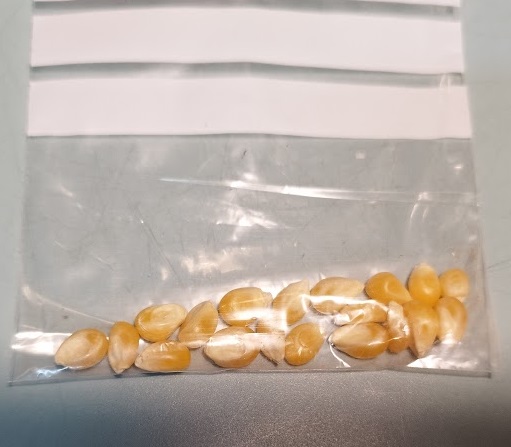Here are some of my grexes experiments.
I will start with corn. I have done two plantings this year. First planting with a grex, and second planting with the same grex, but with 4 more varieties. I will try a couple generations next year.
The first planting was started through direct seeding with an elevated seed density. It was sowed in a lonely row. It was a variety that had high genetic diversity, like a landrace, it was a local variety. There were several types of stalks, green one, mixed green with red, rainbow stalk, and another one with more red than green. The cobs also got that red tint, some of them got it and other ones got the white cob. Kernels had hard skin. Pollination was low even when some of the stocks were touching each other.
The pros of this variety is that the kernels are hard and the bugs do not eat them, they are resistant to drought, they like to grow with very high density, and the seed was available to purchase at an affordable price, the color is very yellow, kind of orange probably with good nutrients. The weaknesses of this variety are that the corns are open on the top, kernels are hard, bugs are attracted to them, low pollination in general, and small cobs.
I saved seeds from some of the cobs that did not have any bugs and some of the best looking ones even though they did have some bugs. I do not know if the last part was a good idea.
I was thinking of planting in a block to achieve better pollination. So for the second planting, I reduce the seeding density, and I plant five rows. Rows were spaced less than one meter/ three feet. Seeds in the row spaced thirty centimeters / one foot.
I include 4 new varieties. Probably two sweet corn, and two for popcorn. Two packages were bought and two were seed swaps, they contained very few seeds, less than 10.
I was reluctant to mix popcorn with sweetcorn, but with so little diversity and fewer plants, my concern was inbreeding.
The germination was good, I only put one seed in each hole and I think most of them sprouted, 90%+.
The new varieties were not that drought tolerant and were planted later in full dry spell. Most of the new additions grew very short and only produced one cob. Only one plant of the fresh additions did great. Most of them got bug damage, there were worms eating the sweet kernels.
The first harvest was abundant, chicken liked the corn. The second was passable. At least I have seeds for trying next year.
Here is a photo of the second harvest.
I got more varieties of seed prepared for next year. Two seed packets of a local variety and a couple purple kernels from a seed swap.
Some tips for drying the seed?










